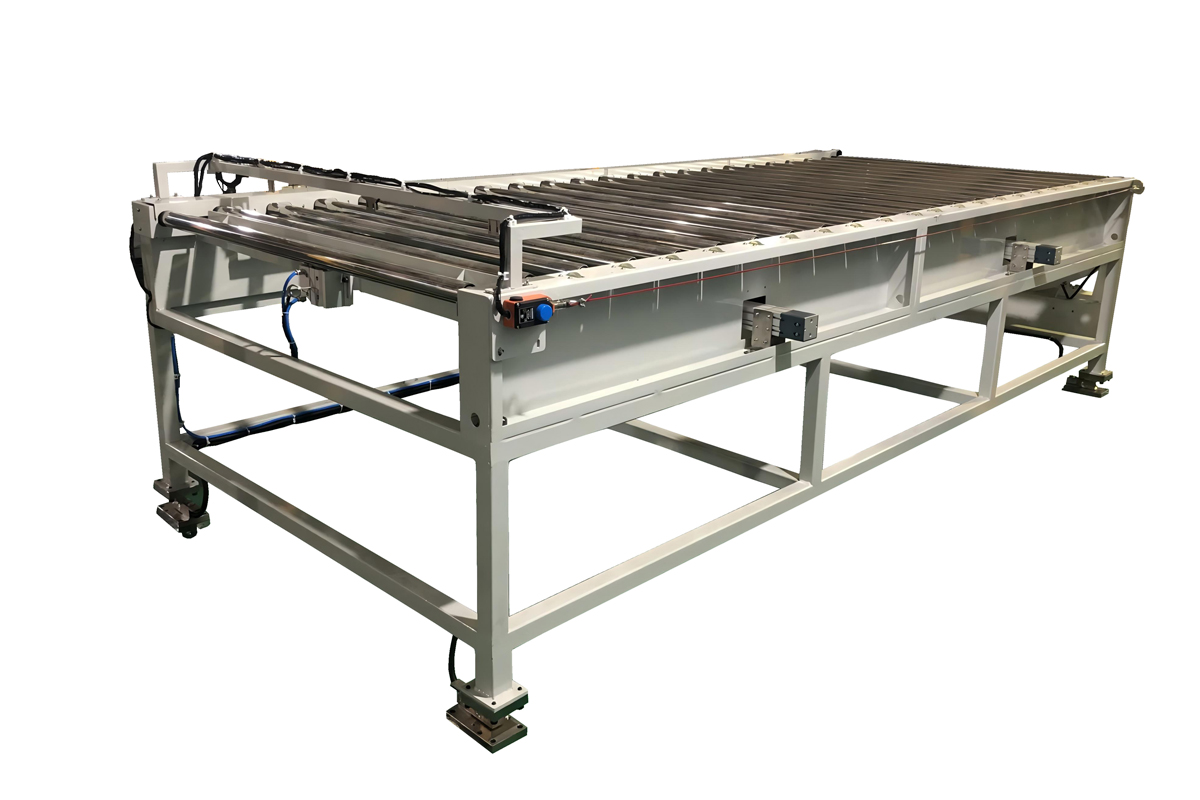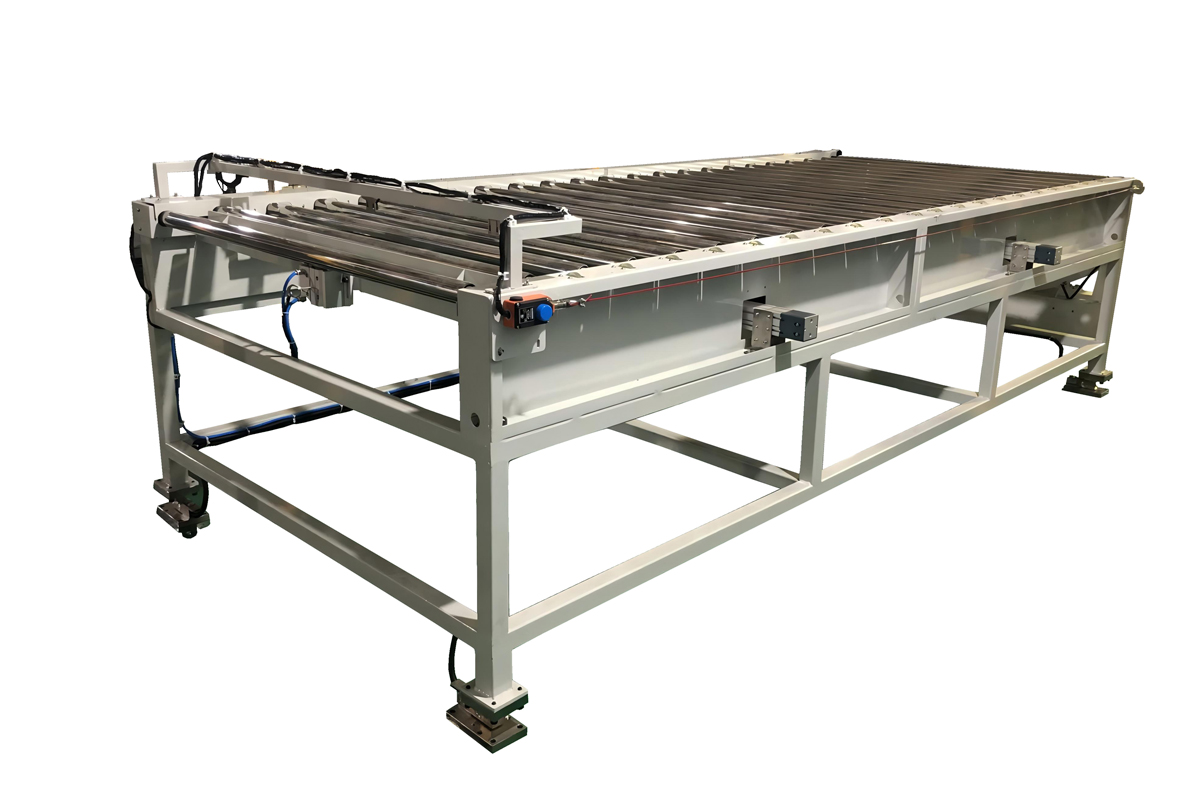Roller Conveyor is a common type of industrial conveyor. It usually consists of a series of rollers connected together, these rollers can be collision and friction under the action of the goods along the designated track for transmission. Roller Conveyor is characterized by simple structure, high efficiency, low noise, easy maintenance, etc. It is widely used in logistics, warehousing, production and other industries.

Working Principle
The working principle of Roller Conveyor is to rotate the roller with the help of the driver, so as to pull the items on it to move forward. The drive can be a motor, pneumatic device or hydraulic system, etc., which is selected according to the specific application scenario and requirements. Driven by the roller, the items can move smoothly and continuously on the conveyor belt, realizing the goal of automated production line.
Main features
1. Simple structure: the structure of roller conveyor is relatively simple, easy to install and maintain.
2. High efficiency: due to the continuous rolling of the roller, the articles can move on the conveyor belt quickly and smoothly, which improves the production efficiency.
3. Low noise: the noise generated by the roller conveyor in the operation process is relatively small, and the impact on the working environment is small.
4. Convenient maintenance: the maintenance of roller conveyor is relatively simple, only need to regularly check the wear and tear of the roller, as well as the operating status of the drive system.
Application fields
Roller conveyor has a wide range of applications in many fields, including but not limited to:
1. Logistics and warehousing: used for sorting, handling and storing of goods to improve logistics efficiency.
2. Manufacturing: used for material handling and processing on the production line to realize automatic production.
3. Food processing: for food transportation, packaging and processing, to ensure food hygiene and safety.
4. Pharmaceutical industry: used for conveying, sorting and packaging of drugs to ensure the quality and safety of drugs.
5. Airport terminal: used for conveying and sorting of baggage and goods to improve transportation efficiency.
Maintenance and upkeep
In order to ensure the long-term stable operation of the roller conveyor, regular maintenance and repair work is required. This includes:
1. Regular inspection: Check the wear and tear of the rollers, the operating status of the drive system, and the tension of the conveyor belt.
2. Cleaning and maintenance: Regularly clean the dust and dirt on the surface of the conveyor belt and roller to keep the equipment tidy.
3. Lubrication and maintenance: Regular lubrication of the roller bearings and other parts to ensure the normal operation of the equipment.
4. Electrical inspection: Regularly check the wiring of the electrical system and switches and other components to ensure the safety of the electrical system.
FAQ
What is a Roller Conveyor?
A roller conveyor is a type of industrial conveyor that consists of a series of rollers that are connected together to transfer items along a specified track by collision and friction.
How does a roller conveyor work?
The working principle of a roller conveyor is to rotate the rollers by means of an actuator (e.g. motor, pneumatic device or hydraulic system, etc.), thus pulling the items on top of them forward.
What are the main features of roller conveyors?
Roller conveyor is characterized by simple structure, high efficiency, low noise, easy maintenance, etc. It is suitable for conveying a variety of materials.
What are the common classifications of roller conveyor?
Roller conveyor can be classified according to the roller material (such as metal, plastic, rubber), driving mode (electric, pneumatic, hydraulic) and structure form (linear, turning, inclined).
How to choose a suitable roller conveyor?
Selection of suitable roller conveyor needs to consider the weight of materials, size, conveying speed, conveying distance and working environment and other factors, while combining with the roller material, drive mode and structural form for selection.
In what fields are roller conveyors used?
Roller conveyors have a wide range of applications in logistics and warehousing, manufacturing, food processing, pharmaceutical industry, airport terminals and other fields.
How to maintain roller conveyor?
Maintenance of roller conveyors includes regular checking of the wear of the rollers, the operating status of the drive system and the tension of the conveyor belt, cleaning and maintaining the surface of the conveyor belt and rollers, lubricating the roller bearings and other parts, and checking the safety of the electrical system.
How to deal with the failure of roller conveyor during operation?
Once the roller conveyor fails during operation, it should be shut down immediately and cut off the power supply, and contact the professional maintenance personnel for overhaul and treatment. At the same time, the fault phenomenon and time of occurrence should be recorded for subsequent analysis and improvement.
How does the roller material of roller conveyor affect the conveying effect?
The material of the roller directly affects the conveying effect of roller conveyor. Metal roller is suitable for conveying heavy goods, plastic roller is suitable for conveying light goods, and rubber roller is suitable for the occasions that need anti-skid and shock absorption.
What are the advantages of roller conveyors over belt conveyors?
Compared with belt conveyors, roller conveyors have higher conveying efficiency, higher load carrying capacity, less noise and more flexible conveying direction. In addition, roller conveyors are suitable for conveying a wide range of materials, including irregularly shaped items, whereas belt conveyors may be limited by the shape and size of the material.









